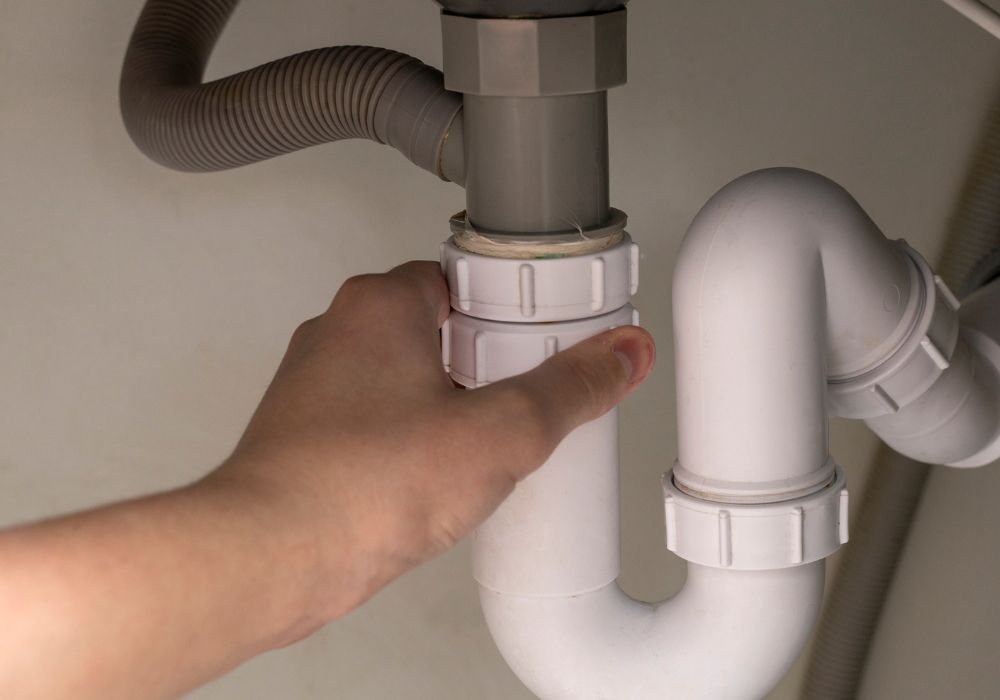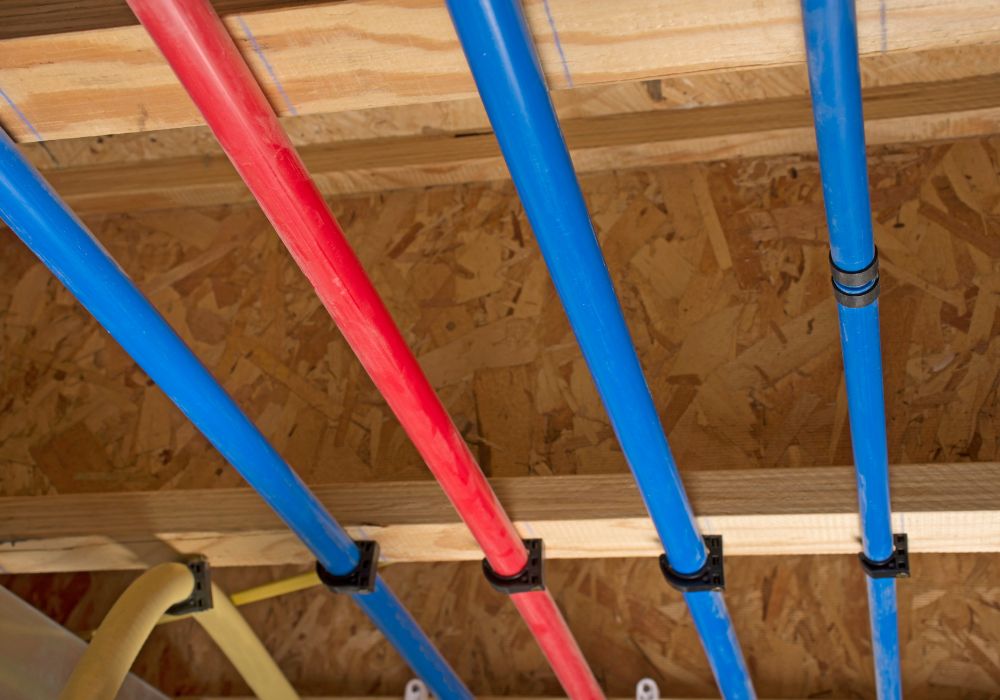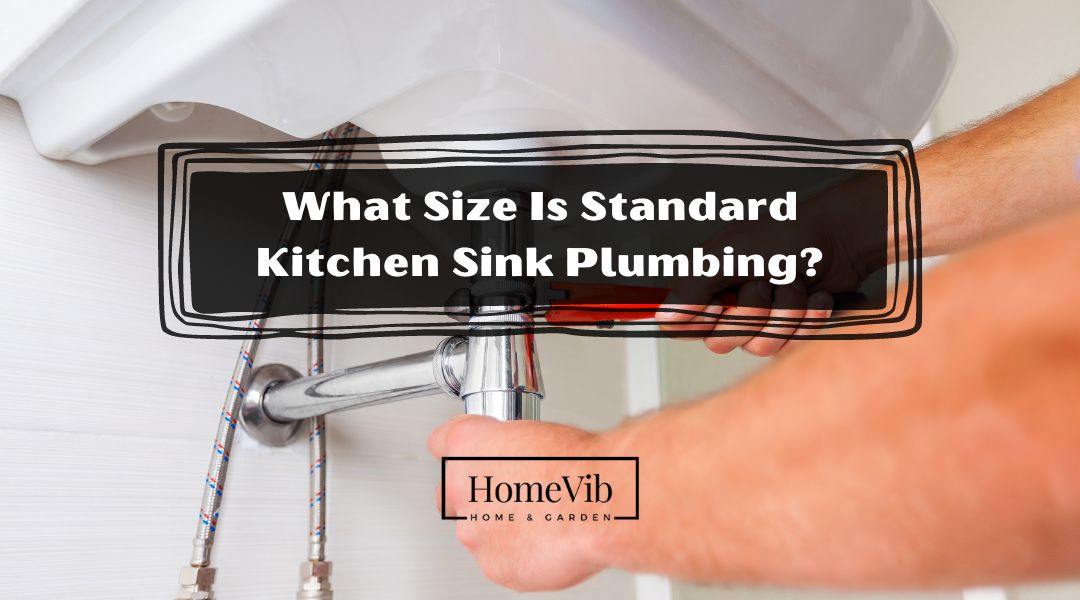Choosing the right size for your kitchen sink is a factor when evaluating your plumbing. It can make all the difference in your kitchen’s appearance and efficiency.
But how do you determine what size sink to use? There are many factors to consider, such as the size of your workspace and countertop.
However, it may be time to decide if you’re quite new to remodeling. If you have any ideas for upgrading your plumbing fixtures and upgrades, this post can give you a head start.
In today’s plumbing, a 1 1/2-inch-diameter pipe is standard for drains. But 3-inch and 2-inch pipes are also on hand. Some older kitchen sinks may have pipes only 1 1/4 inches in diameter. However, a 1 1/2-inch pipe should be adequate for a basic kitchen sink drain.
What Are the Specs Of the Kitchen Sink Drain?
The typical drain pipe size in modern plumbing is 1 1/2 inches in diameter.

Other Kitchen Sink Drains
There are, however, 3-inch and 2-inch pipes available. Even the pipes in the rarest old sinks may only be 1 1/4 inches in diameter. Overall, the standard kitchen sink drain only needs a 1 1/2-inch pipe.
There are a few options for kitchen sink drain sizes. However, 1 1/4 inches is the minimum required by the International Code Council.
We’ve included some of its components below to help you get to know your sink drain.
- Spray Head
- Escutcheon
- Strainer
- Stoppers
- Strainer Basket
- Strainer Flange
- Rubber Gasket, Strainer Nut, and Friction Gasket
- P-trap
Rough In Height
Sink drains need a rough-in height of 18–20 inches to pass inspection. It should be just below standard sink drains’ typical 24-28-inch range.
P Trap
You can determine the drain’s rough-in height by the P-trap’s location beneath the sink. According to the International Code Council, P-trap should be 24 in. above the drain.
What To Consider When Choosing Pipe Size?
In choosing the pipe size, you must consider the building regulations & plumbing codes. At the same time, it is best to determine the water pressure and drainage system.
Plumbing Codes
The plumbing code is a common factor. The National Kitchen and Bath Association (NKBA) recommends a 2′′ drain pipe.
Building Regulations
The minimal standards for plumbing should follow each state’s housing code. In New York, the installation of plumbing systems is only up to three stories in height.
Amount of Water Pressure

Home water pressure is typically between 45 and 80 psi. At 40 psi or less, the pressure seems low. Therefore, it is best to determine the water supply within your area.
Ductwork for a Drainage System
A home’s sewage system consists of pipes that run straight to collect water from fixtures. There is no standard size for the horizontal drain pipe. However, 2 inches and 1 1/2 inches are common.
Overall, it all comes down to personal preference and necessary outflow. Typically, a higher head calls for a smaller pipe diameter.
A smaller delivery size is the way to go if you have stringent head requirements. In most cases, the suction size is also greater than the delivery size.
How Do You Measure Kitchen Sink Pipes?
To measure the kitchen sink pipe, measure the interior and exterior diameter. The following step is to measure it with a measuring tape. Next is to figure out the nominal pipe size.
Step 1. Determine if you have male or female threads.
Find out if your pipe contains male or female threads or if there aren’t any threads at all. Pipes with threads, or notches, on their ends are compatible.
You can locate male threads on the exterior pipes. At the same time, you can determine female threads on the pipe’s interior.
Step 2. Measure the exterior diameter if you have male threads.
Determine whether the pipe contains male threads by measuring its outside diameter. Over the full length of the pipe, this is how we measure its external diameter.
Wrap a flexible measuring tape around the pipe’s outer edge to locate it.
Step 3. Measure the interior diameter if you have female threads.
Third, if the pipe has female threads, measure its interior diameter. That’s how far apart the two ends of the pipe are, not counting the pipe’s wall thickness.
Use a ruler to measure where a cross-section exists at the end of the pipe.
Step 4. Convert to nominal size.
If your diameter is less than 14 inches, convert it to a nominal size (360 mm). Rather than converting, you can skip the step if the diameter exceeds 14 inches.
In this case, it will be the same as the nominal diameter.
What Is the Minimum Pipe Size For Kitchen Sink Drain?
The standard minimum pipe size for a kitchen sink drain is 1 1/2 inches. This size is ideal for catching any overflow from a kitchen sink.
On the other hand, a two-inch pipe is a common standard to drain a bathroom shower or a washing machine. Yet, you can stack it vertically to drain water from a kitchen sink.
However, a standard kitchen can also use a 2-inch drain line. Single-bowl sinks often only need 1-1/2″ of clearance. The drain slope should be at least 2% (1/4′′ per foot of run) and no less than 45 degrees. There must be a vent no further than five feet away.
When it comes to piping and drainage systems, it’s important to use quality materials. This is especially true when installing your kitchen sink. Since you use the kitchen sink to dispose of solid and liquid waste, it is susceptible to clogging.
Pipes with smooth internal surfaces are there to prevent obstruction. Thus, you must use the appropriate type of pipe for these applications.
To accomplish this, you must ensure proper drainage. Most importantly, select the appropriate pipe size for your sink.
What Size Is the P Trap In a Kitchen Sink?
P-traps for kitchen sinks normally have a 40mm or one-a-half-inch diameter. However, the length of the trap arm from the trap weir to the vent must be at least two pipe diameters.
What is a P Trap?
Generally, a P Trap creates a low point in a pipe that will collect enough water from obstructing the pipe. If you don’t have it, sewage odors will rise to your drain.
A trap with adequate ventilation is equally as important. The water in the trap acts as a seal. Additionally, failure to provide adequate ventilation can lead to siphonage. In that case, it can draw water through the trap seal and compromise it.
Each time you use P-trap, it washes away any debris that may have settled in the trap section of the pipe.
However, a P-trap can wear out just like any other part of your plumbing system. In most cases, replacement may be necessary.
What Pipes Are Used For Kitchen Sinks?
PVC, PEX, ABS, and Copper pipes are the top options that you can use for kitchen sinks. Be mindful that you can use these different pipes for several applications.
PVC Pipes

The acronym “PVC” refers to polyvinyl chloride pipes. Most PVC pipes and fittings contain this material, which you can apply for various purposes.
PVC is ideal for kitchen sink waste pipes since it can handle high temperatures. PVC is thick enough to prevent slitting and ripping of waste. Ideally, it also has smooth interiors to allow for fast, clean drainage.
PEX Pipes

Similar to PVC pipes, PEX tubing can be joined to fittings. Plumbers give you different ways to hook up the valves while using them to feed a sink.
ABS Pipes
Use ABS pipe only when you’re going to be submerging it. You can apply this when the temperature is extremely low and there won’t be any light shining on it.
Copper Pipes

It’s a strong and malleable material that works wonderfully for domestic plumbing. You can use this kind of pipe in environments with high temperatures.
In addition, copper water pipes will not rust and taint the water supply.
Kitchen Drain 2 Inch vs. 1 1/2 Inch
The normal dimension of a kitchen drain is 1-1/2 inches in size. Another option is to use a larger, two-inch-wide one.
The kitchen sink’s P-trap is 1.5 inches in diameter and uses slip nuts to connect to the larger 2-inch pipe. As you can see, nothing is out of the ordinary here.
Legally, per the IPC, that’s the standard. Although the trap and trap arm might be 1-1/2″, the UPC insists on a 2″ drain for kitchen sinks.
1/ 1/2 inches
The standard size for a single-sink drain pipe is 1 1/2 inches. Furthermore, if you have a garbage disposal, your sink’s drain pipe should be 1 1/2 inches in diameter. Then two inches in diameter if not.
2 inches
This size is also suitable for a dishwasher or double sink. Remember that if you have higher water pressure, it may necessitate a 2-inch pipe.
Overall, one should never attempt to fit a larger drain into a smaller one. Having a bigger size doesn’t necessarily provide advantages.
FAQ
What To Do If Clogs Form In The Drain Pipe?
If you have a clogged drain, use baking soda and around ten cups of hot water to dissolve the clog. Repeat as many times as required.
You can continue with this method:
- Combine baking soda and vinegar, then let the mixture sit for a while before adding hot water. Acid added to the vinegar could slowly eat away at the metal pipes.
- Necessitate the use of boiling water. Remember that you can find clogs depending on the angle and length of the straight pipe. Pour the hot water slowly at the start, then quickly at the end.
- You should use boiling water whenever there is a sluggish blockage. Apply this if the drain cannot handle a full open stream of cold water.
- Meanwhile, you can also use Coke to clear clogged drains because of the phosphoric acid in soda. A two-liter bottle of Coke ought should do the trick.
Ultimately, clogs are a real problem, so keep an eye out, and don’t be afraid to get some help if you become stuck.
Can I Use Different Size Pipes For My Sink Drain?
Yes, you can use different sizes of pipes on your sink drain.
However, there may be a need for plumbing modifications.
You must use a reducer to connect a 2 inches pipe to a drain hole that is only 1 1/4 inches in diameter.
In a pipeline, the water pressure and the pipe diameter link together. When you reduce a pipe’s diameter, the pressure inside the pipe increases.
Above all, consult a plumber to make the necessary adjustments.









